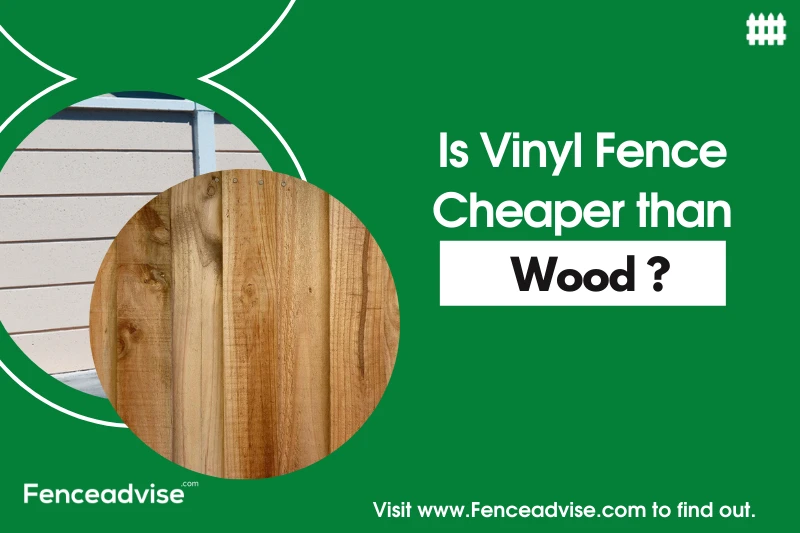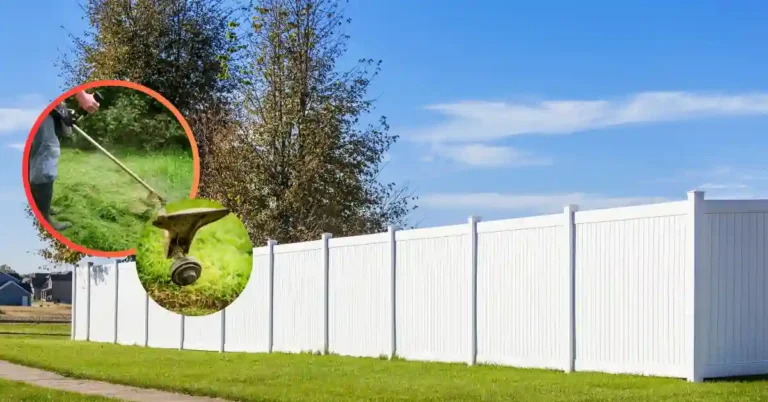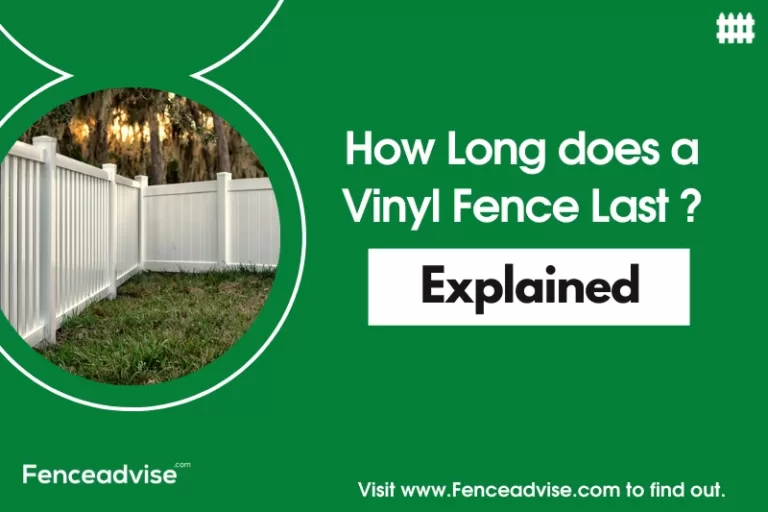We include products we think are useful for our readers. If you buy through links on this page, we may earn a small commission. Read our affiliate disclaimer here.
There are a lot of factors to consider when choosing between vinyl and wood fencing. Both materials have their pros and cons, and the right choice for your home will depend on your specific needs and budget.
Vinyl fences are cheaper than wood fences in the short term, but they require more maintenance and may not last as long. Wood fences are more expensive to install, but they can last for many years with proper care.
Cost Of Vinyl Fencing
There are many factors to consider when pricing vinyl fencing. The height, style, and length of the fence all play a part in the overall cost. Gates and other additional features, such as post caps, also affect the price.
In general, the taller the fence, the more expensive it will be. A 6-foot privacy fence will be more expensive than a 3-foot picket fence. The style of the fence also makes a difference. A standard vinyl fence costs less than a premium vinyl fence.
And finally, the length of the fence affects the price. The more linear feet there are, the more expensive the fence will be.
To help you calculate the cost, per linear foot cost of vinyl fencing on average is $25-35 depending on the brand, style, and type of vinyl fencing.
Our Recommended Vinyl Fence- Check here
Find the right fence contractor for your project
Cost Of Wood Fencing
Wood fencing is a popular choice for homeowners because of its natural beauty and variety of styles. It also provides good security and privacy. The cost of wood fencing varies depending on the type of wood, the height and length of the fence, and the installation fee.
The most common type of wood used for fencing is cedar, which costs around $15 per square foot installed. Other types of wood, such as pine and spruce, are less expensive but also less durable. If you want a fence that will last for many years, cedar is a good choice.
Talk to a Fence Contractor Near You
Which Requires More Maintenance Cost: Vinyl Or Wood?
There are a few things to consider when it comes to the cost of maintaining a fence. The two most popular types of fencing are vinyl and wood. Vinyl fencing is made from PVC, which is a plastic that is durable and requires very little maintenance.
Wood fencing, on the other hand, needs to be treated with a sealant every few years in order to protect it from the elements. It is also susceptible to rot and termites, which can increase the cost of maintenance.
If you live in a dry climate, vinyl fencing may be a better option because it doesn’t require painting or staining as wood does. However, if you live in a humid climate, wood fencing may be a better option because vinyl can become warped in high humidity.
Find top-rated fence installers in your area
Vinyl Fencing Vs Wood Fencing (Best Value For The Money)
Vinyl fencing is made of PVC or polyvinyl chloride. This material is a good choice for fencing because it is durable and low maintenance. It will never rot, warp, or splinter, and it doesn’t need to be painted. Vinyl fences come in a variety of colors, and they can be custom-made to fit any design.
Wood fencing is the traditional option. It’s made from natural materials, so it looks great and can be customized to fit any style.
However, it also requires regular maintenance, such as painting or staining, to keep it looking its best. Wood fences are also susceptible to weather damage and rot.
So if you’re looking for a durable and stylish option, vinyl fencing is the way to go.
Read More:
- Coyote Rollers For Wood Fence Review
- Wood Fence Labor Cost Calculator
- How To Install Wood Fence on Top of Brick Wall? (Step By Step)
How Often Do Vinyl Fences Need Maintenance?
Vinyl fencing is a popular choice for fencing because it is durable and does not require a lot of maintenance. However, it is still important to perform some basic maintenance tasks to keep your vinyl fence looking its best.
You should clean your fence regularly. Use a soft brush to remove any dirt or debris, and then rinse it off with a hose. You can also use a vinyl cleaner to help remove built-up dirt and grime.
How Often Do Wood Fences Need Maintenance?
Wood fencing needs to be treated and maintained on a regular basis to ensure that it lasts long and looks great. The frequency of maintenance will depend on the type of wood, the weather conditions, and how the fence is used.
In general, fences should be checked every 6 months for damage and treated with a sealant or wood preservative every 2-3 years.
There are a few key things to keep in mind when it comes to wood fencing maintenance:
- Fences should be inspected at least twice a year and more often if they are near water or other elements that could damage them.
- Make sure to remove any debris or leaves from the fence regularly, as they can cause rot.
- If the fence is painted, make sure to repaint it every few years (or as needed) to protect it from the elements.
- If you have a wooden fence, consider applying a sealant or wood protector to help keep it looking new.
Get Free Quote
Quickly Find a Fence Installation, Repair Contractor Near you
Looking for a reliable fence installation or repair contractor in your area? Look no further! Fill out the form below to receive a free, no-obligation quote from one of our experienced professionals.
Our contractors are experienced and dedicated to providing the highest quality fence services. With a quick response time and competitive pricing, you can trust us to handle all of your fencing needs. Get started today and see the difference a high-quality fence can make for your property!
Conclusion
In general, vinyl fencing is cheaper than wood fencing. However, there are a few factors that can affect the overall cost of each type of fence. For example, the size and height of the fence, as well as the materials used, can all impact the final price.
At FenceAdvise, we pride ourselves on being the most reliable and trustworthy source of fencing information. Our articles are based on only the highest quality sources, including peer-reviewed studies, to ensure that our readers always have access to accurate information. Read more about our Editorial Guidelines, About Us.





